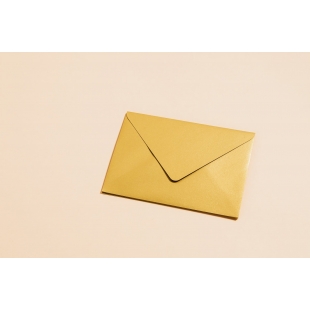US Tax information update
-

TAS Tax Tip: What if I receive an IRS notice that says something is wrong with my 2022 tax return?
Don’t panic! It is important to remember – not all correspondence from the IRS necessarily contains bad news.
It is the IRS’s responsibility to make sure your tax return is as accurate as it can be while it is processed and verified. These verification checks can include anything from finding and fixing basic mathematical errors to checking for required attachments, like schedules that support a credit or deduction you are claiming. The IRS also checks to confirm the amounts shown on your return match what banks, employers, third parties, and other government agencies have reported. In some cases, these checks may identify a credit that if you if you are eligible, could result in a bigger refund.
What should I do if I get correspondence regarding my tax return?
Open it, read it, and keep it in a safe place (in case you need it later). IRS correspondence always tells you why the IRS is writing, what topic it is about, and either what you need to do in response and by when, or it will tell you that you don’t need to reply at all.
Letters and notices aren’t always easy to understand. So, here are three resources we recommend you use if you want more help understanding that particular notice or letter:
Taxpayer Advocate Service’s Taxpayer Roadmap: Use the ‘Did you get a notice from the IRS?’ look-up feature to find a simplified explanation of why it is being sent. Then click on the ‘See notice details’ area to find a fuller explanation of why it is being sent, what this means for you and what next steps you should take. It also provides additional links to related resources you may need to see or use to provide missing information.
Taxpayer Advocate Service’s Get Help pages: These webpages provide detailed instructions to help you resolve the most common issues we see by yourself. They are grouped by categories. For return processing issues, start with I Got a Notice From the IRS. Then if needed review specific topics that apply to your situation like, I Made a Mistake on My Return or I Need Help Resolving My Balance Due.
IRS’s Understanding Your IRS Notice or Letter page: These pages explain why notices are sent and contain a search feature to find your specific notice and related information.
If you need more time to respond than indicated, contact the IRS using the contact information provided.
Note: To find the correspondence number look in either the top or bottom right-hand corner. They will generally be preceded by the letters CP or LTR.
Do I need to reply?
Whether you need to reply or not will depend on the issue.
If you agree with the information or change listed, sometimes there is no need to reply. Other times, even if you do agree, you may need to provide specific information to resolve the issue, particularly if you need to verify your identity or if a schedule is missing. In most tax return processing situations, you generally have 60 days to reply, but be sure to go by the date specified in your letter.
If you disagree, the letter should outline how to dispute the issue, including what action(s) is needed and a date to complete the action by, as well information about your Taxpayer Rights.
Whether you agree or not, if it requires a reply – do not delay! You must reply by the date required or you may lose certain resolution options or may also have to pay in full before the IRS will consider your position. See more on this below.
When to respond
If your notice or letter requires a response by a specific date, there are many reasons you’ll want to comply. Here are just a few:
minimize additional interest and penalty charges; prevent further action from being taken on the account or against you; and preserve your appeal rights if you don’t agree.
How and where to reply
The correspondence should tell you exactly where to send your response, whether it’s to a mailing address or fax number. Follow the instructions.
What if I want to talk to someone?
Each notice or letter should include contact information. The telephone number is usually found in the upper right-hand corner.
If a specific employee is working your case, it will show a specific phone number for that employee or the department manager. Otherwise, it will show the IRS toll-free number (800-829-1040).
The IRS encourages taxpayers to make use of the IRS.gov website and its online resources, like Tax Law Questions to get questions answered and find resources to resolve problems.
Important: You’ll want to check the IRS’s Help for taxpayers and tax professionals: Special filing season alerts page for announcements related to processing 2022 tax returns before you call in case the information you need is located there.
The best days to call the IRS are Wednesdays, Thursdays, and Fridays. The IRS advises that wait times are the longest on Mondays and Tuesdays, and close to the April filing deadline.
Have a copy of your tax return and the correspondence available when you call.
Wait – I still need help
You can generally resolve most notices or letters without help, but you can also get the help of a professional – either the person who prepared your return, or another tax professional.
If you can’t afford to hire a tax professional to assist you, you may be eligible for free or low cost representation from an attorney, certified public accountant, or enrolled agent associated with a Low Income Taxpayer Clinic (LITC). In addition, LITCs can help if you speak English as a second language and need help understanding the notice or letter. For more information or to find an LITC near you, see the LITC page or IRS Publication 4134, Low Income Taxpayer Clinic List.
If your IRS problem is causing you financial hardship, see Can TAS help me with my tax issue?.
More resources
Issues & Errors Get Help topics
Paying Taxes Get Help topics
Notices from the IRS
Understanding your CP12 Notice from the IRS
NTA Blog: Math Error Part I
NTA Blog: Math Error Part II: Math Error Notices Aren’t Just Confusing; Millions of Notices Adjusting the Recovery Rebate Credit Also Omitted Critical Information
Let Us Help You
Resource: https://www.taxpayeradvocate.irs.gov/news/tas-tax-tip-what-if-i-receive-an-irs-notice-that-says-something-is-wrong-with-my-2022-tax-return/
US TAX, U.S. TAX
TAS Tax Tip: What if I receive an IRS notice that says something is wrong with my 2022 tax return?more -

Time is running out: Taxpayers missing $1.5 billion in refunds for 2019 must file by July 17
IR-2023-112, June 8, 2023
WASHINGTON ― The Internal Revenue Service today encouraged nearly 1.5 million people across the nation to submit a tax return to claim their refunds for tax year 2019 by the July 17, 2023, deadline.
The IRS estimates almost $1.5 billion in refunds remain unclaimed because people haven't filed their 2019 tax returns yet. Available data includes a special state-by-state estimate of how many people are potentially eligible for these refunds in each state and each state's median potential refund. The average median refund for tax year 2019 was $893.
"Time is running out for more than a million people to get their tax refunds for 2019," said IRS Commissioner Danny Werfel. "Many people may have overlooked filing a 2019 tax return due to the pandemic. We don't want people to miss their window to receive their refund. We encourage people to check their records and act quickly before the deadline. The IRS has several important ways that people can get help."
Under the law, taxpayers usually have three years to file and claim their tax refunds. If they don't file within three years, the money becomes the property of the U.S. Treasury.
For 2019 tax returns, however, people have more time than usual to file to claim their refunds. Usually, the normal filing deadline to claim old refunds falls around the April tax deadline, which was April 18 this year for 2022 tax returns. But the three-year window for 2019 unfiled returns was postponed to July 17, 2023, due to the COVID-19 pandemic emergency. IRS Notice 2023-21, issued on Feb. 27, 2023, provided legal guidance on claims made by the postponed deadline. The law requires taxpayers to properly address, mail and ensure the tax return is postmarked by July 17, 2023.
Taxpayers could lose more than just their refund of taxes withheld or paid during 2019. Many low- and moderate-income workers may be eligible for the Earned Income Tax Credit (EITC). For 2019, the credit was worth as much as $6,557. The EITC helps individuals and families whose incomes were below certain thresholds in 2019. Those who are potentially eligible for EITC in 2019 had incomes below:
$50,162 ($55,952 if married filing jointly) for those with three or more qualifying children.
$46,703 ($52,493 if married filing jointly) for people with two qualifying children.
$41,094 ($46,884 if married filing jointly) for those with one qualifying child.
$15,570 ($21,370 if married filing jointly) for people without qualifying children.
The IRS reminds taxpayers seeking a 2019 tax refund that their checks may be held if they have not filed tax returns for 2020 and 2021. In addition, the refund will be applied to any amounts still owed to the IRS or a state tax agency and may be used to offset unpaid child support or past due federal debts, such as student loans.
Current and prior-year tax forms (such as the tax year 2019 Forms 1040 and 1040-SR) and instructions are available online on the IRS Forms, Instructions and Publications page or by calling toll-free 800-TAX-FORM (800-829-3676).
Need to file a 2019 tax return? Several options to get key documents
Although it's been several years since 2019, the IRS reminds taxpayers there are ways they can still gather the information they need to file this tax return. People should begin now to make sure they have enough time to file before the July deadline for 2019 refunds. Here are some options:
Request copies of key documents: Taxpayers who are missing Forms W-2, 1098, 1099 or 5498 for the years 2019, 2020 or 2021 can request copies from their employer, bank or other payers.
Use Get Transcript Online at IRS.gov. Taxpayers who are unable to get those missing forms from their employer or other payers can order a free wage and income transcript at IRS.gov using the Get Transcript Online tool. For many taxpayers, this is by far the quickest and easiest option.
Request a transcript. Another option is for people to file Form 4506-T, Request for Transcript of Tax Return, with the IRS to request a "wage and income transcript." A wage and income transcript shows data from information returns received by the IRS, such as Forms W-2, 1099, 1098, Form 5498 and IRA contribution information. Taxpayers can use the information from the transcript to file their tax return. But plan ahead – these written requests can take several weeks; people are strongly urged to try the other options first.
State-by-state estimates of individuals who may be due 2019 income tax refunds
Based on tax information currently available, the IRS estimated how many people in each state may be entitled to a tax refund. The actual refund amount will vary based on a household's tax situation.
State or District
Estimated
Number of
Individuals
Median
Potential
Refund
Total
Potential
Refunds*
Alabama
23,900
$880
$23,694,700
Alaska
6,000
$917
$6,542,300
Arizona
35,400
$824
$33,911,500
Arkansas
12,800
$864
$12,586,100
California
144,700
$856
$141,780,000
Colorado
30,100
$859
$29,514,000
Connecticut
15,400
$934
$16,198,400
Delaware
5,700
$880
$5,754,900
District of Columbia
4,400
$887
$4,550,100
Florida
89,300
$893
$89,530,400
Georgia
48,000
$826
$46,269,000
Hawaii
8,800
$932
$9,197,700
Idaho
7,600
$758
$6,996,000
Illinois
55,800
$916
$57,591,300
Indiana
31,700
$916
$32,115,100
Iowa
15,300
$926
$15,492,600
Kansas
14,600
$913
$14,753,700
Kentucky
18,600
$906
$18,574,200
Louisiana
22,000
$877
$22,274,800
Maine
6,400
$876
$6,197,300
Maryland
31,400
$897
$32,344,500
Massachusetts
35,700
$966
$38,400,900
Michigan
48,500
$888
$48,582,600
Minnesota
23,200
$848
$22,387,800
Mississippi
12,300
$820
$11,836,700
Missouri
31,800
$880
$31,345,700
Montana
5,200
$854
$5,144,900
Nebraska
7,800
$893
$7,745,600
Nevada
15,800
$869
$15,550,300
New Hampshire
6,900
$974
$7,451,800
New Jersey
40,500
$924
$42,035,900
New Mexico
9,600
$867
$9,522,400
New York
81,600
$945
$86,826,200
North Carolina
45,800
$862
$44,426,600
North Dakota
3,700
$958
$3,997,100
Ohio
51,800
$868
$50,234,900
Oklahoma
21,400
$897
$21,770,000
Oregon
23,700
$801
$22,348,900
Pennsylvania
56,000
$924
$57,572,600
Rhode Island
4,300
$924
$4,468,700
South Carolina
18,200
$809
$17,264,100
South Dakota
3,700
$918
$3,746,700
Tennessee
28,100
$873
$27,623,700
Texas
135,300
$924
$142,235,200
Utah
11,700
$845
$11,198,400
Vermont
3,100
$901
$3,036,600
Virginia
42,200
$869
$42,110,500
Washington
42,400
$934
$44,823,200
West Virginia
6,500
$959
$6,818,900
Wisconsin
21,000
$834
$20,003,100
Wyoming
3,300
$949
$3,534,800
Totals
1,469,000
$893
$1,479,913,400
* Excluding credits.
Resource: https://www.irs.gov/newsroom/time-is-running-out-taxpayers-missing-1-point-5-billion-in-refunds-for-2019-must-file-by-july-17
Time is running out: Taxpayers missing $1.5 billion in refunds for 2019 must file by July 17more -

Amending a Return
Did you miss a credit or deduction, or need to correct something else on your tax return for this year or past years?
If so, you can file an amended tax return.
Here are five things you need to know about amending a tax return:
First, be sure to identify the year of the return you're amending. Remember, normally you can only go back three years.
Second, choose how you want to file your amended return.Returns for tax year 2019 or later can be amended electronically.If you're amending a return prior to 2019, you'll need to mail the paper Form 1040-X to the IRS.
Third, if you're amending more than one return, you must prepare a separate 1040X for each year.If you mail these Forms 1040-X to the IRS, use separate envelopes, and be sure you send them to the correct IRS address depending on where you live. You can find this information in the form's instructions.
Fourth, if you're filing for an additional refund, wait until you get your original refund before filing a 1040-X.
Finally…don't amend your return just because of math errors. We'll check your math and fix the error for you.
You can learn more at irs.gov/1040x.
Youtube : https://www.youtube.com/watch?v=X7Bol664lhw
Resource: https://www.irs.gov/newsroom/amending-a-return-youtube-video-text-script
US TAX, U.S. TAX
Amending a Returnmore -

What the right to challenge the IRS's position and be heard means for taxpayers
IRS Tax Tip 2023-64, May 9, 2023
The IRS wants every taxpayer to be know and understand their rights in the event they need to work with the IRS on a personal tax matter. These 10 fundamental rights are collectively known as the Taxpayer Bill of Rights. Included on this list is the right to challenge the IRS's position and be heard. Here's more about what this right means for taxpayers.
Taxpayers have the right to:
Raise objections.
Provide additional documentation in response to formal or proposed IRS actions.
Expect the IRS to consider their timely objections.
Have the IRS consider any supporting documentation promptly and fairly.
Receive a response if the IRS does not agree with their position.
Here are some specific things this right affords taxpayers.
In some cases, the IRS will notify a taxpayer that their tax return has a math or clerical error. If this happens, the taxpayer:
Has 60 days to tell the IRS that they disagree.
Should provide copies of any records that may help correct the error.
May call the number listed on the letter or bill for assistance.
Can expect the agency to make the necessary adjustment to their account and send a correction if the IRS upholds the taxpayer's position.
Here's what will happen if the IRS does not agree with the taxpayer's position:
The agency will issue a notice proposing a tax adjustment. This is a letter that comes in the mail.
This notice provides the taxpayer with a right to challenge the proposed adjustment.
The taxpayer makes this challenge by filing a petition in U.S. Tax Court. The taxpayer must generally file the petition within 90 days of the date of the notice, or 150 days if it is addressed outside the United States.
Taxpayers can submit documentation and raise objections during an audit. If the IRS does not agree with the taxpayer's position, the agency issues a notice explaining why it is increasing the tax. Prior to paying the tax, the taxpayer has the right to petition the U.S. Tax Court and challenge the agency's decision.
In some circumstances, the IRS must provide a taxpayer with an opportunity to have hearing with the independent Office of Appeals before taking enforcement actions to collect tax debt. These actions include levying the taxpayer's bank account immediately after filing a notice of federal tax lien in the appropriate state filing location. If the taxpayer disagrees with the decision of the Appeals Office, they can petition the U.S. Tax Court.
More Information:
Publication 556, Examination of Returns, Appeal Rights, and Claims for Refund
Subscribe to IRS Tax Tips
Resource:https://www.irs.gov/newsroom/what-the-right-to-challenge-the-irss-position-and-be-heard-means-for-taxpayers
US TAX, U.S. TAX
What the right to challenge the IRS's position and be heard means for taxpayersmore -

IRS: Going green could help taxpayers qualify for expanded home energy tax credits
IR-2023-97, May 4, 2023
WASHINGTON — The Internal Revenue Service reminds taxpayers that making certain energy efficient updates to their homes could qualify them for home energy tax credits.
The credit amounts and types of qualifying expenses were expanded by the Inflation Reduction Act of 2022. Taxpayers who make energy improvements to a residence may be eligible for expanded home energy tax credits.
What taxpayers need to know
Taxpayers can claim the Energy Efficient Home Improvement Credit and the Residential Clean Energy Credit for the year the qualifying expenditures are made.
Homeowners who improve their primary residence will find the most opportunities to claim a credit for qualifying expenses. Renters may also be able to claim credits, as well as owners of second homes used as residences. Landlords cannot claim this credit.
IRS encourages taxpayers to review all requirements and qualifications at IRS.gov/homeenergy for energy efficient equipment prior to purchasing. Additional information is also available on energy.gov, which compares the credit amounts for tax year 2022 and tax year 2023.
Energy Efficient Home Improvement Credit
Taxpayers that make qualified energy-efficient improvements to their home after Jan. 1, 2023, may qualify for a tax credit up to $3,200 for the tax year the improvements are made.
As part of the Inflation Reduction Act, beginning Jan. 1, 2023, the credit equals 30% of certain qualified expenses:
Qualified energy efficiency improvements installed during the year which can include things like:
Exterior doors, windows and skylights.
Insulation and air sealing materials or systems.
Residential energy property expenses such as:
Central air conditioners.
Natural gas, propane or oil water heaters.
Natural gas, propane or oil furnaces and hot water boilers.
Heat pumps, water heaters, biomass stoves and boilers.
Home energy audits of a main home.
The maximum credit that can be claimed each year is:
$1,200 for energy property costs and certain energy efficient home improvements, with limits on doors ($250 per door and $500 total), windows ($600) and home energy audits ($150).
$2,000 per year for qualified heat pumps, biomass stoves or biomass boilers.
The credit is available only for qualifying expenditures to an existing home or for an addition or renovation of an existing home, and not for a newly constructed home. The credit is nonrefundable which means taxpayers cannot get back more from the credit than what is owed in taxes and any excess credit cannot be carried to future tax years.
Residential Clean Energy Credit
Taxpayers who invest in energy improvements for their main home, including solar, wind, geothermal, fuel cells or battery storage, may qualify for an annual residential clean energy tax credit. Taxpayers may be able to claim a credit for certain improvements other than fuel cell property expenditures made to a second home that they live in part-time and don't rent to others.
The Residential Clean Energy Credit equals 30% of the costs of new, qualified clean energy property for a home in the United States installed anytime from 2022 through 2033.
Qualified expenses include the costs of new, clean energy equipment including:
Solar electric panels.
Solar water heaters.
Wind turbines.
Geothermal heat pumps.
Fuel cells.
Battery storage technology (beginning in 2023).
Clean energy equipment must meet the following standards to qualify for the Residential Clean Energy Credit:
Solar water heaters must be certified by the Solar Rating Certification Corporation or a comparable entity endorsed by the applicable state.
Geothermal heat pumps must meet Energy Star requirements in effect at the time of purchase.
Battery storage technology must have a capacity of at least 3 kilowatt hours.
The credit is available for qualifying expenditures incurred for installing new clean energy property in an existing home or for a newly constructed home. This credit has no annual or lifetime dollar limit except for fuel cell property. Taxpayers can claim this credit each tax year they install eligible property until the credit begins to phase out in 2033.
This is a nonrefundable credit, which means the credit amount received cannot exceed the amount owed in tax. Taxpayers can carry forward excess unused credit and apply it to any tax owed in future years.
Additional information is available at IRS.gov on qualifying residences and information for taxpayers who also use their home for a business.
When it is time to file a tax return, taxpayers can use Form 5695, Residential Energy Credits, to claim the credit. This credit must be claimed for the tax year when the property is installed, not just purchased.
Good recordkeeping and related resources
Taxpayers are encouraged to keep good records of purchases and expenses during the time the improvements are made. This will assist in claiming the applicable credit during tax filing season.
Other resources:
Energy.gov Credit Comparison Chart
Fact Sheet: Frequently asked questions about energy efficient home improvements and residential clean energy property creditsPDF
Resource:https://www.irs.gov/newsroom/irs-going-green-could-help-taxpayers-qualify-for-expanded-home-energy-tax-credits
US TAX, U.S. TAX
IRS: Going green could help taxpayers qualify for expanded home energy tax creditsmore -

Hobby or business: here’s what to know about that side hustle
IRS Tax Tip 2023-61, May 3, 2023
Sometimes the line between having a hobby and running a business can be confusing, but knowing the difference is important because hobbies and businesses are treated differently when it's time to file a tax return. The biggest difference between the two is that businesses operate to make a profit while hobbies are for pleasure or recreation.
Whether someone is having fun with a hobby or running a business, if they accept more than $600 for goods and services using online marketplaces or payment apps, they could receive a Form 1099-K. Profits from the sale of goods, including personal items, and services is taxable income that must be reported on tax returns.
There are a few other things people should consider when deciding whether their project is a hobby or business. No single thing is the deciding factor. Taxpayers should review all of the factors to make a good decision.
How taxpayers can decide if it's a hobby or business
These questions can help taxpayers decide whether they have a hobby or business:
Do they carry out the activity in a businesslike manner and keep complete and accurate books and records?
Does the time and effort they put into the activity show they intend to make a profit?
Does the activity make a profit in some years – if so, how much profit does it make?
Can they expect to make a future profit from the appreciation of the assets used in the activity?
Do they depend on income from the activity for their livelihood?
Are any losses due to circumstances beyond their control or are the losses normal for the startup phase of their type of business?
Do they change their methods of operation to improve profitability?
Do the taxpayer and their advisors have the knowledge needed to carry out the activity as a successful business?
Whether taxpayers have a hobby or run a business, good record keeping is always key when it's time to file taxes.
More information:
Publication 535, Business Expenses
Publication 334, Tax Guide for Small Business (For Individuals Who Use Schedule C)
Small Business and Self-Employed Tax Center at IRS.gov
Understanding Your Form 1099-K
U.S. TAX
Resourse: https://www.irs.gov/newsroom/hobby-or-business-heres-what-to-know-about-that-side-hustle
Hobby or business: here’s what to know about that side hustlemore -

IRS: Florida storm victims qualify for tax relief; April 18 deadline, other dates extended to Aug. 15
IR-2023-94, May 2, 2023
WASHINGTON — Florida storm victims now have until Aug. 15, 2023, to file various federal individual and business tax returns and make tax payments, the Internal Revenue Service announced today.
The IRS is offering relief to any area designated by the Federal Emergency Management Agency (FEMA) as a result of tornadoes, severe storms and flooding that occurred from April 12 to 14. This means that individuals and households that reside or have a business in Broward County qualify for tax relief. Other areas added later to the disaster area will also qualify for the same relief. The current list of eligible localities is always available on the disaster relief page on IRS.gov.
The tax relief postpones various tax filing and payment deadlines that occurred starting on April 12, 2023, and is based on an April 27 FEMA disaster declaration. As a result, affected individuals and businesses will have until Aug. 15, 2023, to file returns and pay any taxes that were originally due during this period.
This means that taxpayers will have until Aug. 15 to file any 2022 individual income tax returns and various business returns that were originally due on April 18. They will also have until Aug. 15 to pay any tax originally due on these returns. Taxpayers will get the extra time, even if they failed to request a tax-filing extension by April 18.
Among other things, this also means that eligible taxpayers will have until Aug. 15 to make 2022 contributions to their IRAs and health savings accounts.
The Aug. 15 deadline also applies to the quarterly estimated tax payments, normally due on April 18 and June 15.
The Aug. 15 deadline also applies to the quarterly payroll and excise tax returns normally due on May 1 and July 31, 2023. In addition, penalties on payroll and excise tax deposits due on or after April 12 and before April 27, will be abated as long as the tax deposits were made by April 27, 2023.
The IRS disaster relief page has details on other returns, payments and tax-related actions qualifying for the additional time.
Affected individual taxpayers who need more time to file, beyond the Aug. 15 deadline, must file their extension requests on paper using Form 4868. That's because e-file options for requesting an extension are not available after April 18.
By filing this form, disaster-area taxpayers will have until Oct. 16 to file, though tax payments are still due by Aug. 15. Visit IRS.gov/extensions for details.
The IRS automatically provides filing and penalty relief to any taxpayer with an IRS address of record located in the disaster area. Therefore, taxpayers do not need to contact the agency to get this relief. However, if an affected taxpayer receives a late filing or late payment penalty notice from the IRS that has an original or extended filing, payment or deposit due date falling within the postponement period, the taxpayer should call the number on the notice to have the penalty abated.
In addition, the IRS will work with any taxpayer who lives outside the disaster area but whose records necessary to meet a deadline occurring during the postponement period are located in the affected area. Taxpayers qualifying for relief who live outside the disaster area need to contact the IRS at 866-562-5227. This also includes workers assisting the relief activities who are affiliated with a recognized government or philanthropic organization.
Individuals and businesses in a federally declared disaster area who suffered uninsured or unreimbursed disaster-related losses can choose to claim them on either the return for the year the loss occurred (in this instance, the 2023 return normally filed in early 2024), or the return for the prior year (that is, the 2022 return normally filed in 2023). Be sure to write the FEMA declaration number – 4709-DR − on any return claiming a loss. See Publication 547 for details.
The tax relief is part of a coordinated federal response to the damage caused by these storms and is based on local damage assessments by FEMA. For information on disaster recovery, visit DisasterAssistance.gov.
U.S. TAX
Resourse: https://www.irs.gov/newsroom/irs-florida-storm-victims-qualify-for-tax-relief-april-18-deadline-other-dates-extended-to-aug-15
IRS: Florida storm victims qualify for tax relief; April 18 deadline, other dates extended to Aug. 15more -

An Offer in Compromise can help certain taxpayers resolve tax debt
IRS Tax Tip 2023-58, April 27, 2023
When a taxpayer can't pay their full tax liability or if paying would cause financial hardship, they may want to consider applying for an Offer in Compromise. This agreement between a taxpayer and the IRS settles a tax debt for less than the full amount owed. The goal is a compromise that's in the best interest of both the taxpayer and the agency. The application fee for an offer in compromise is $205. Low-income taxpayers don't have to pay this fee, and they should check if they meet the definition of low-income in the instructions for Form 656, Offer in Compromise.
When reviewing applications, the IRS considers the taxpayer's unique set of facts and special circumstances affecting their ability to pay including their:
Income.
Expenses.
Asset equity.
The Offer in Compromise Booklet has detailed information
The booklet covers everythingPDF a taxpayer needs to know about submitting an Offer in Compromise including:
Eligibility.
Costs to apply.
Application process.
Forms.
The booklet is also available in Spanish. Taxpayers should download and use the latest version of the OIC booklet to avoid processing delays.
Taxpayers can also watch a how-to video series on Offer in Compromise
The IRS has a free how-to video series on Offer in Compromise available in English, Spanish and Simplified Chinese. The playlist has easy-to-find information that taxpayers need to know when they consider and apply for an OIC. Topics in the series include:
Overview of the OIC process, forms and pre-qualifier tool.
Step-by-step guides for completing Forms 433-A and 433-B OIC. These are collection information statements which are required for both individual and business-related offers.
Step-by-step example of how to complete Form 656, Offer in Compromise.
Checklist of everything that's needed to submit a valid offer.
Taxpayers can see if they're eligible with the pre-qualifier tool
Taxpayers can enter their financial information and tax filing status in the tool to calculate a preliminary offer amount. The tool is only a guide. The IRS will make the final decision on whether to accept the taxpayer's application.
Beware of offer in compromise mills
Offers in compromise are an important program to help people who can't pay to settle their federal tax debts. But "offer in compromise mills" can aggressively promote offers in compromise in misleading ways to people who clearly don't meet the qualifications, often costing taxpayers thousands of dollars. Taxpayers can check their eligibility for free using the IRS Offer in Compromise Pre-Qualifier tool.
U.S. TAX
Resourse: https://www.irsvideos.gov/Business/SBTW/Lesson3
An Offer in Compromise can help certain taxpayers resolve tax debtmore -

Lesson 3 - Filing and paying taxes electronically
Lesson 3 - Filing and paying taxes electronically
Introduction and Benefits of E-Filing
Male Host: Hello and welcome to filing and paying taxes electronically.
Thanks for joining us.
Female Host: In this workshop, we'll describe IRS E-File and its benefits for your individual and business returns, as well as describing electronic payment options, so you can determine which is best for your business.
By the end of this workshop, we hope to convince you of the benefits of filing and paying your taxes, electronically.
Male Host: Before we discuss your specific business situation, let's talk about the benefits of electronic filing.
First, e-filing is convenient.
You'll receive a fast electronic acknowledgement that the IRS has received your return.
Second, e-filing is accurate.
There are few risks of math errors and of receiving a letter from the IRS.
If there are any errors on the return, you'll receive an easy to understand error message in plain language.
Third, e-filing is safe.
Your tax information is secure and only authorized IRS employees have access to the system.
Female Host: Fourth, just as you filed electronically, you can receive a refund electronically by providing your bank's routing number; the type of account, either checking or savings; and your account number.
Finally, if you use tax preparation software, the software performs your calculations and highlights needed forms and schedules.
You can buy your own software or you can choose a tax preparer who is an authorized IRS e-file provider.
You may even be eligible to electronically file your federal returns for free through an IRS partner. And signing your return is simple and electronic. You can choose your own 5-digit personal identification number, or pin, to sign your return. For additional information, go to irs.gov/smallbiz with a "z" and go to the Preparing Your Taxes section and choose employment taxes.
Customize this Lesson for your Business
Now, we have some questions and your answers will help us customize a segment for you.
Please answer the following questions as they pertain to you and your business.
How is your business organized?
Choose one now from the selections on your screen.
Is it a sole proprietor, a partnership, a corporation, charity, or non-profit?
Sole Proprietor
As a self-employed sole proprietor when you do file your form 1040 electronically you'll complete a schedule C to report your business income and expenses.
Schedule C is included in the Form 1040 software package you purchased.
So there's no need to purchase additional business tax software.
This software does all of the math and it even calculates depreciation for you.
And if you use a tax preparer their software can take care of everything too.
Partnership
Large partnerships of over 100 partners are required to file electronically.
All other partnerships, however, may choose to voluntarily file their Form 1065 U.S. Return of Partnership Income, electronically, regardless of the number of partners.
A complete list of approved IRS e-file for business providers who offer the Form 1065 e-file product can be found at www.irs.gov.
Just click on the area for "File" and go to the section for "Business & Self-Employed".
There you will find more information, as well as links to companies' websites.
You may be able to enter your return information online using software provided by the Form 1065 e-file provider of your choice.
The provider will then transmit your Form 1065 and Schedule K-1, Partner's Share of Income, Deductions, Credits, etc. to the IRS.
Corporation
(Music playing) Corporations can electronically file Form 1120 U.S. Corporation Income Tax Return, Form 1120-F U.S. Income Tax Return of a Foreign Corporation and Form 1120-S U.S. Income Tax Return for an S Corporation, as well as associated forms and schedules.
Any business taxpayer who files these forms, may electronically file their return through an authorized IRS e-file provider.
A listing of 1120 Return e-file approved providers is available at www.irs.gov If you are a corporate filer, who would like to participate in 1120, 1120F, or 1120S e-file, talk to your tax preparer to see if they offer it to their clients.
Some corporations are required to file electronically.
Those corporations with $10 million or more in total assets, and that file 250 or more returns a year, are required to electronically file their Form 1120, 1120F, and 1120S.
The total number of returns is determined by aggregating all returns regardless of type, that are required to be filed over the calendar year including income tax returns.
Returns required under Section 6033 of the Internal Revenue Code.
information returns, excise tax returns, and employment tax returns.
Charity or Non-profit
[music playing] Charities and non-profits can electronically file the following forms through an IRS authorized e-file provider: Form 990, Return of Organization Exempt from Income Tax.
Form 990 EZ, the short form.
Form 1120-POL, US Income Tax Return for Certain Political Organizations.
Form 8868, Application for Extension of Time to File an Exempt to Organization Return.
Form 990-PF, Return of Private Foundation and Form 990-N.
Most small tax-exempt organizations whose annual gross receipts are normally $50,000 or less are required to electronically submit Form 990N, also known as the e-Postcard unless they choose to file a complete Form 990 or Form 990EZ.
To complete Form 990N go to irs.gov/990n and follow the directions to register, create, and send your e-Postcard.
Any exempt organization, may electronically file their return through an approved IRS e-file for business provider.
You can access the continuously updated approved providers at www.irs.gov.
Your organization may even be eligible to electronically file the 990 EZ for free through an IRS partner.
If you're a non-profit who would like to participate in 990 e-file, please talk to your tax preparer to see if they offer electronic filing to their clients.
You can find additional information about electronic filing for charities and nonprofits at www.irs.gov.
It is under the charities and nonprofit section.
Additionally, electronic filing of employment returns is available at irs.gov/businesses.
Look for the employment taxes section.
[END]
Do you pay your taxes electronically?
[music playing] Now, do you pay your taxes electronically?
[silence]
Benefits of Paying Electronically
[Music playing] There are two ways to pay electronically.
Electronic Funds Withdraw, also known as EFW, and the Electronic Federal Tax Payment System, also known as EFTPS.
Electronic Funds Withdrawal
EFW is a way for you to pay money you owe when you file your taxes.
When you use EFW, you authorize the US Department of Treasury, through a treasury financial agent, to transfer money from your bank account to the Treasury account.
You enter your bank routing number, your bank account number, and the account type such as checking or savings, that you want the payment withdrawn from.
This is instantaneous, and there is no charge, but make sure you check with your financial institution about any fees, it may charge.
The payment date is the same as the date the balance due return is filed, and the funds are withdrawn in a single transaction, not in installments.
You can call the IRS e-file Payment Inquiry and Cancellation Service toll free at 1-888-353-4537 to inquire about payments.
Wait seven to ten days after your return was accepted before making inquiries.
Contact the IRS e-Help Desk immediately at 1-866-255-0654 if there is an error in the amount withdrawn.
Additionally, www.irs.gov/payments provides detailed information on electronic payment of taxes.
Electronic Filing Tax Payment System (EFTPS)
More than 12 million taxpayers are currently enrolled in the Electronic Filing Tax Payment System, and it is especially useful to business taxpayers with employees because it makes it easy for them to make deposits of withheld employee income and payroll taxes. Also, you can use EFTPS to pay your own quarterly estimated taxes.
In addition, EFTPS is safe, secure and private. It is also available 24/7. You have the ability to schedule payments when you want and you'll receive immediate confirmation of every transaction. Also, you can check up to 16 months of your EFTPS payment history online or by calling EFTPS customer service. You have two options for enrolling in EFTPS, and both are free. Online enrollment is available at www.eftps.gov. You will receive your Personal Identification Number, or PIN, in the mail within five to seven business days.
If you would like to enroll by mail, you can call EFTPS at 1-888-725-7879, Monday - Friday 9 a.m. to 6 p.m. ET and request the enrollment form by mail. You will then receive your PIN within seven business days after your completed form is received by EFTPS. As soon as you receive your PIN, you can begin scheduling payments. If you use eftps.gov, follow the prompts to set your internet password. If you wish to schedule payments by phone, just call 1-800-555-3453.
Also, if you receive a pre-enrollment letter from EFTPS, you can activate your enrollment by calling the same number. You'll need your financial institution's routing number and your account number.
EFTPS Payment Methods
[Music playing] There are two primary EFTPS payment methods for business owners.
EFTPS direct and EFTPS through a financial institution.
EFTPS Direct is an electronic payment method that allows you to access EFTPS directly, either by phone or online to pay your taxes.
Make sure that you have your PIN and EIN or SSN.
You will be prompted for any other information necessary to complete your tax payment as you go along.
You'll need to submit your tax payment information by 8 P.M. Eastern Time at least one day prior to your due date at EFTPS.gov or check the EFTPS website for the number to call for payment.
After submitting your information, you will immediately receive an electronic funds transfer acknowledgement number to keep for your records.
If you want to cancel a payment you must do so by 11:59 P.M. Eastern Time at least two business days before the scheduled date.
EFTPS will then debit your designated bank account on the date that you schedule.
Your tax data will be reported to the IRS and your records will be updated automatically.
You may check the status and history of any payment you made using EFTPS in the last 16 months at www.EFTPS.gov In the second method, EFTPS through a financial institution, you instruct your financial institution to electronically move funds from your account to the Treasury account.
Not all financial institutions, however, offer this service, so before selecting this option check with your bank to see if they offer this service, how much it costs and if you're eligible to use it. Remember it's your responsibility to initiate payments or to authorize a trusted third party such as a tax professional or payroll service to initiate the payment for you. If you choose to allow your payroll company to make tax payments on your behalf, check with them for specific fees, deadlines and instructions for enrollment in EFTPS.
If your payroll company is not making all of the tax payments through EFTPS, you will need to enroll in EFTPS to make those payments.
Even if you do enroll in a payroll company to pay all of your taxes, it is still a good idea to enroll in EFTPS separately.
This allows you to check on and ensure that your payroll company is making the payments on your behalf.
It also provides flexibility if you ever need to change payroll companies in the future.
For more information on EFTPS go to www.irs.gov and click on the EFTPS logo or go directly to the EFTPS website at www.eftps.gov.
And don't forget to review IRS Publication 966, Electronic Federal Tax Payment System: A Guide to Getting Started.
Summary
[Music Playing] Depending on how you answer the questions at the beginning of the workshop, you've learned quite a lot about filing and paying federal income taxes electronically.
We hope we've given you some very convincing reasons to consider filing and paying electronically.
If you're an employer, please join us for the workshop about filing and paying your employment taxes electronically.
We hope you'll take advantage of our IRS e-file and e-pay options.
You now know that e-file and e-pay streamline the tax process and make things easier for you.
Thank you for joining us for this workshop.
Best wishes for your business.
Resourse: https://www.irsvideos.gov/Business/SBTW/Lesson3
Lesson 3 - Filing and paying taxes electronicallymore -

When an IRS letter arrives, taxpayers don’t need to panic, but they do need to read it
When an IRS letter arrives, taxpayers don’t need to panic, but they do need to read it
IRS Tax Tip 2023-55, April 24, 2023
Getting a letter from the IRS can make some taxpayers nervous – but there's no need to panic. The IRS sends notices and letters when it needs to ask a question about a taxpayer's tax return, let them know about a change to their account or request a payment.
When an IRS letter or notice arrives in the mail, here's what taxpayers should do:
Read the letter carefully. Most IRS letters and notices are about federal tax returns or tax accounts. Each notice deals with a specific issue and includes any steps the taxpayer needs to take. A notice may reference changes to a taxpayer's account, taxes owed, a payment request or a specific issue on a tax return. Taking prompt action could minimize additional interest and penalty charges.
Review the information. If a letter is about a changed or corrected tax return, the taxpayer should review the information and compare it with the original return. If the taxpayer agrees, they should make notes about the corrections on their personal copy of the tax return and keep it for their records. Typically, a taxpayer will need to act only if they don't agree with the information, if the IRS asked for more information or if they have a balance due.
Take any requested action, including making a payment. The IRS and authorized private debt collection agencies do send letters by mail. Taxpayers can also view digital copies of select IRS notices by logging into their IRS Online Account. The IRS offers several options to help taxpayers who are struggling to pay a tax bill.
Reply only if instructed to do so. Taxpayers don't need to reply to a notice unless specifically told to do so. There is usually no need to call the IRS. If a taxpayer does need to call the IRS, they should use the number in the upper right-hand corner of the notice and have a copy of their tax return and letter.
Let the IRS know of a disputed notice. If a taxpayer doesn't agree with the IRS, they should follow the instructions in the notice to dispute what the notice says. The taxpayer should include information and documents for the IRS to review when considering the dispute.
Keep the letter or notice for their records. Taxpayers should keep notices or letters they receive from the IRS. These include adjustment notices when the IRS takes action on a taxpayer's account. Taxpayers should keep records for three years from the date they filed the tax return.
Watch for scams. The IRS will never contact a taxpayer using social media or text message. The first contact from the IRS usually comes in the mail. Taxpayers who are unsure whether they owe money to the IRS can view their tax account information on IRS.gov.
More information:
Understanding Your IRS Notice or Letter
Tax Scams/Consumer Alerts
Resource: https://www.irs.gov/newsroom/when-an-irs-letter-arrives-taxpayers-dont-need-to-panic-but-they-do-need-to-read-it
When an IRS letter arrives, taxpayers don’t need to panic, but they do need to read itmore -

IRS reminds taxpayers of April estimated tax payment deadline
IRS YouTube Videos
Estimated Tax Payments | ASL
IR-2023-78, April 12, 2023
WASHINGTON — The Internal Revenue Service today reminded people that Tax Day, April 18, is also the deadline for first quarter estimated tax payments for tax year 2023.
These payments are normally made by self-employed individuals, retirees, investors, businesses, corporations and others that do not have taxes withheld or employees that don't have enough taxes withheld by their employers throughout the year.
Income taxes are a pay-as-you-go process. This means, by law, taxes must be paid as income is earned or received during the year. Most people pay their taxes through withholding from paychecks, pension payments, Social Security benefits or certain other government payments including unemployment compensation.
Most often, those who are self-employed or in the gig economy need to make estimated tax payments. Similarly, investors, retirees and others often need to make these payments because a substantial portion of their income is not subject to withholding.
Other income generally not subject to withholding includes interest, dividends, capital gains, alimony and rental income. Paying quarterly estimated taxes will usually lessen and may even eliminate any penalties.
Exceptions to the penalty and special rules apply to some groups of taxpayers, such as farmers and fishers, those who recently became disabled, recent retirees, those who receive income unevenly during the year and casualty and disaster victims.
Due to recent disasters, eligible taxpayers in California, Alabama and Georgia, for example, have until Oct. 16, 2023, to make 2023 estimated tax payments, normally due on April 18, June 15 and Sept. 15. People in other states may have extended deadlines as well; a full list is available on the Tax Relief in Disaster Situations.
How to pay estimated taxes
Form 1040-ES, Estimated Tax for Individuals, includes instructions to help taxpayers figure their estimated taxes. They can also visit IRS.gov/payments to pay electronically.
The best way to make a payment is through IRS online account. There taxpayers can see their payment history, any pending payments and other useful tax information. Taxpayers can make an estimated tax payment by using IRS Direct Pay; Debit Card, Credit Card or Digital Wallet; or the Treasury Department's Electronic Federal Tax Payment System (EFTPS).
For information on other payment options, visit IRS.gov/payments. If paying by check, taxpayers should be sure to make the check payable to the "United States Treasury."
Publication 505, Tax Withholding and Estimated Tax, has additional details, including worksheets and examples, that can be especially helpful to those who have dividend or capital gain income, owe alternative minimum tax or self-employment tax, or have other special situations.
Tax Withholding Estimator
The IRS urges people to use its Tax Withholding Estimator tool to help ensure the right amount of tax is withheld from their paychecks.
Checking taxes withheld periodically helps to protect against having too little tax withheld and possibly facing an unexpected tax bill or penalty at tax time. It also allows people to check taxes withheld up front, resulting in bigger paychecks throughout the year and likely a smaller refund at tax time.
IRS.gov assistance 24/7
Tax help is available 24/7 on IRS.gov. The IRS website offers a variety of online tools to help taxpayers answer common tax questions. For example, taxpayers can search the Interactive Tax Assistant, Tax Topics and Frequently Asked Questions to get answers to common questions.
The IRS is continuing to expand ways to communicate to taxpayers who prefer to get information in other languages. The IRS has posted translated tax resources in 20 other languages on IRS.gov. For more information, see We Speak Your Language.
US TAX, U.S. TAX
Resource:https://www.irs.gov/newsroom/irs-reminds-taxpayers-of-april-estimated-tax-payment-deadlineIRS reminds taxpayers of April estimated tax payment deadlinemore -

Common errors on a tax return can lead to longer processing times
IRS Tax Tip 2023-48, April 11, 2023
When a tax return has errors, like typos or math mistakes, it can lead to longer processing times and frustration for taxpayers. Many common errors are easy to avoid by carefully reviewing the tax return.
Before filing their tax return, taxpayers should review their return for a few common issues
Incorrect filing status
If taxpayers are unsure about their filing status, the Interactive Tax Assistant on IRS.gov can help them choose the correct status, especially if more than one filing status applies. Tax software, including IRS Free File, also helps prevent mistakes when selecting a tax return filing status.
Errors in names, birth dates and Social Security numbers
Taxpayers must correctly list the name, date of birth and Social Security number for each person they claim as a dependent on their individual income tax return. They should enter each SSN and name on a tax return exactly as it's printed on the Social Security card.
If a dependent or spouse does not have a Social Security number and isn't eligible to get one, taxpayers can apply for an Individual Tax Identification Number and list that instead.
Not answering the digital assets question
Forms 1040 and 1040-SR for tax year 2022 ask whether, at any time during 2022, the taxpayer received, sold, exchanged, gifted or otherwise disposed of a digital asset or financial interest in any digital asset. Taxpayers must complete this field by checking either "Yes" or "No."
Incorrect routing and account numbers
Taxpayers can request direct deposit of a federal refund into one, two or even three accounts. They should make sure the financial institution routing and account numbers entered on the return are correct. Incorrect numbers can delay a refund or deposit it into the wrong account. Taxpayers should also make sure the name on the account matches the name on the tax return.
Taxpayers can also use their refund to purchase U.S. Savings Bonds.
Not signing and dating the return
If filing a joint return, both spouses must sign and date the return. When taxpayers are self-preparing their taxes and filing electronically, they must sign and validate their electronic tax return by entering their prior year's adjusted gross income (AGI). Taxpayers can review Validating Your Electronically Filed Tax Return if they have questions.
Resource: https://www.irs.gov/newsroom/common-errors-on-a-tax-return-can-lead-to-longer-processing-timesCommon errors on a tax return can lead to longer processing timesmore












